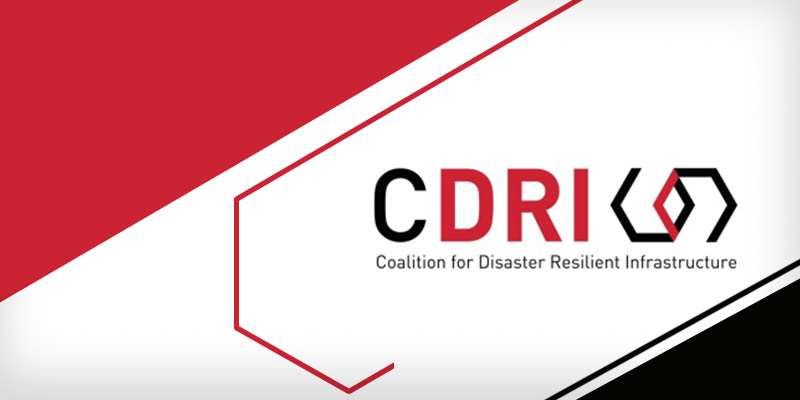- India
- Jun 30
Explainer / Coalition for Disaster Resilient Infrastructure (CDRI)
The government approved the categorisation of the Coalition for Disaster Resilient Infrastructure (CDRI) as an ‘international organisation’. The decision was taken at a meeting of the Union Cabinet chaired by Prime Minister Narendra Modi.
Coalition for Disaster Resilient Infrastructure
• During the 74th UN General Assembly in New York in September 2019, PM Narendra Modi announced the launch of the Coalition for Disaster Resilient Infrastructure (CDRI).
• In August 2019, the Union Cabinet had approved the setting up of the CDRI with its secretariat in New Delhi along with a support of Rs 480 crore to the CDRI.
• CDRI is designed to be an international platform where knowledge is generated and exchanged on different aspects of disaster and climate resilience of infrastructure and brings together technical expertise from a multitude of stakeholders. In doing so, it creates a mechanism to assist countries to upgrade their capacities and practices, with regard to infrastructure development.
• It is a global partnership of national governments, UN agencies and programmes, multilateral development banks and financing mechanisms, the private sector, and knowledge institutions that aims to promote the resilience of new and existing infrastructure systems to climate and disaster risks, thereby ensuring sustainable development.
• CDRI promotes rapid development of resilient infrastructure to respond to the Sustainable Development Goals’ imperatives of expanding universal access to basic services, enabling prosperity and decent work.
• Since its launch, 31 countries, six international organisations and two private sector organisations have joined as members of the CDRI. The CDRI has been expanding its membership consistently by attracting a wide variety of economically advanced countries, developing countries, and countries that are most vulnerable to climate change and disasters.
What is the need for the CDRI initiative?
• Making infrastructure resilient will need to be implemented simultaneously with accelerated and expanded climate action and disaster risk reduction, from the local and national to regional and global scale.
• Resilient infrastructure is critical for peoples’ well-being, quality of life, and economic prospects. It is as much about water-pipes withstanding an earthquake, as it is about people having adequate and safe access to their workplaces, schools, and hospitals. At a macro level, physical infrastructure underpins the achievement of all 17 Sustainable Development Goals (SDGs).
• An estimated $94 trillion is expected to be invested in infrastructure globally in the next 25 years to sustain economic growth. Meanwhile, recent disasters indicate that up to 66 per cent of total public sector losses in weather and climate related extreme events are related to infrastructure damage.
• There is a clear need for ensuring that all new and existing infrastructure systems are climate and disaster resilient.
How is CDRI funded?
• The support from government of India serves as a corpus for the CDRI to fund technical assistance and research projects on an ongoing basis, setting up the secretariat office and covering recurring expenditures over a period of five years from 2019-20 to 2023-24.
• There are no obligations on the part of members to make financial contributions to CDRI. However, at any point (during the first five years or beyond), members of the CDRI may make voluntary financial or in-kind contributions to the CDRI such as assignment of experts from national institutions to the CDRI Secretariat.
Benefits of categorisation of CDRI as ‘international organisation’
Categorisation of the CDRI as an ‘international organisation’ and signing of Headquarters Agreement (HQA) with CDRI for grant of exemptions, immunities and privileges as contemplated under Section-3 of the United Nations (Privileges and Immunities) Act, 1947 will provide it an independent and international legal persona so that it can efficiently and effectively carry out its functions internationally.
This will help the CDRI in:
• Deputing experts to other countries that are particularly vulnerable to disaster risk or require support for post disaster recovery and also bringing in experts from member countries to India, for similar purposes.
• Deploying funds globally and receive contributions from member countries, for CDRI activities.
• Making available technical expertise to assist countries to develop resilient infrastructure in accordance with their disaster and climate risks and resources.
• Imparting assistance to countries in adopting appropriate risk governance arrangements and strategies for resilient infrastructure.
• Rendering all possible support to member countries in upgrading their systems to ensure disaster and climate resilience of existing and future infrastructure, while aligning with the Sustainable Development Goals (SDGs), the Paris Climate Agreement and the Sendai Framework for Disaster Risk Reduction.
• Leveraging international engagement to foster disaster resilient infrastructure at home.
• Providing Indian scientific and technical institution as well as infrastructure developers an opportunity to interact with global experts. This will help build our own capacities and mechanisms — both in public and private sectors — to support disaster resilient infrastructure development.
Manorama Yearbook app is now available on Google Play Store and iOS App Store


